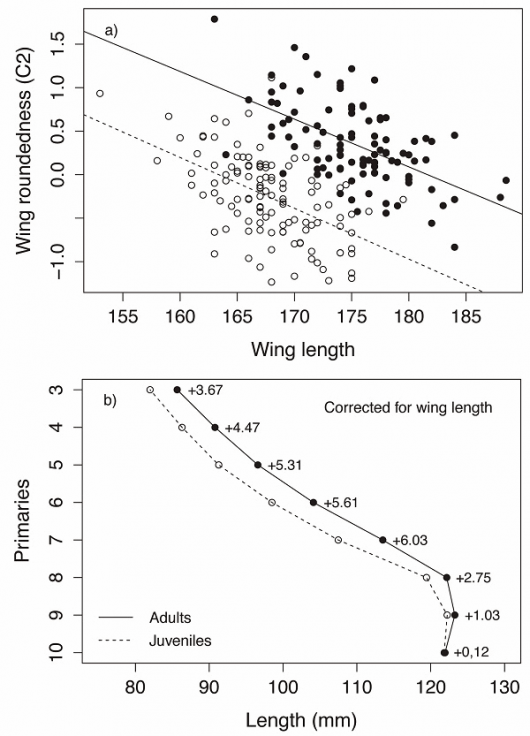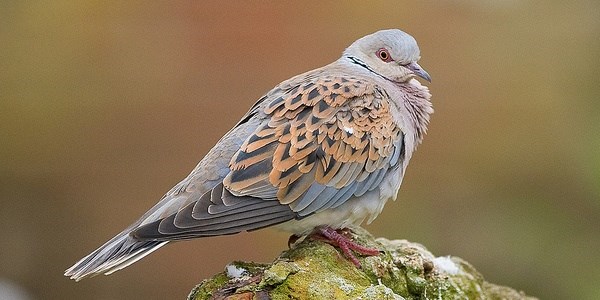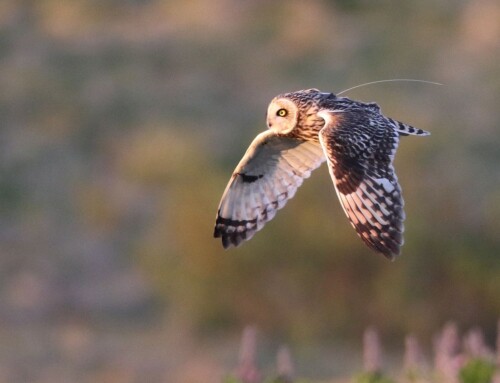Differences in wing morphology between juvenile and adult European Turtle Doves
LINKED PAPER
Differences in wing morphology between juvenile and adult European Turtle Doves Streptopelia turtur: implications for migration and predator escape. Cabodevilla, X., Moreno-Zarate, L. & Arroyo, B. 2017. IBIS. DOI: 10.1111/ibi.12564. VIEW
Wing shape is linked with flight style and has great importance in the survival capacity of birds. For example, wing shape directly affects aerodynamics, flight energetic cost, manoeuvrability and the directionality and velocity of the take off. The two most common wing morphologies, elliptical wings (rounded and convex) and high aspect ratio wings (pointed and concave), are commonly related to high manoeuvrability and flight speed, respectively (Hickman et al. 2008). Migratory birds have more pointed wings, as this wing shape improves the energetic efficiency of the flight and consequently increase survival probability during migration. On the other hand, forest birds or species that have terrestrial habits have usually more rounded wings, as this wing shape gives them more manoeuvrability and better angle and more speed during take off, improving the opportunities of escape from the attack of a predator.
It has been found that wing shape differs among species or populations of the same species with different migration distances (Lockwood et al. 1998). But also, within a population of a specific species, great differences in wing shape between ages and sexes can be found (Milá et al. 2008, Nadal et al. 2017). During the first complete moult, the wing morphology of a juvenile bird can change, leading to a different wing shape for the adult life. Previous studies have found these differences in a variety of species, most of them passerines. These studies have found that juvenile birds have more rounded wings than adults, improving their manoeuvrability and stability, which is very important for inexperienced birds that have just started flying (Milá et al. 2008, de la Hera et al. 2014).
But, what happens with non-passerine species? Can results from a single order be extrapolated to all birds?
In this work, we analysed the wing shape of a non-passerine migratory species, the European Turtle Dove, Streptopelia turtur. This is a trans-Saharan migrant, which in its daily life has marked terrestrial habits. So, it can benefit from a pointed wing for migration, but at the same time it can benefit from a rounded wing for predator escape during its daily life. This species carries out the first complete moult during its first year of life, starting during its first summer, before its first migration, and finishing in wintering areas after migration.
We used 218 Turtle Dove wings collected in Spain during the 2016 hunting season (21 August–21 September). The age of the sampled birds (juveniles, born the sampling year; and adults) was determined using moult criteria, following Demongin (2013).
For each wing, we measured forearm (as an index of body size), wing length and the lengths of each of the eight most external primaries. We performed different statistical approaches to analyse the wing shape of juveniles and adults of this species.

Our results show that, like in other species, during the first complete moult Turtle Doves grow longer primary feathers, so adult wings are longer than juvenile wings. But in contrast with results of previous studies with passerines, in this species the juveniles have more pointed and more concave wings than adults. During the first moult not all primary feathers increase in length in the same proportion. The seventh, sixth and fifth primaries increase their length to a greater extent, whereas the 10th primary increases less than other feathers, resulting in a more rounded and convex morphology of the adult wing. This is why, in the case of the Turtle Dove and in contrast to other species, young birds have more pointed wings than adults. It is possible that, for juvenile birds, surviving the first migration (which occurs shortly after fledging) is a very strong selection force, favouring more pointed wings.

Therefore, our results suggest that the wings of juveniles are adapted for long-distance migration, but that predator avoidance becomes a more important selection force than migration for this species once the first migration has been achieved. For that reason, during the first moult, finished in the wintering areas, the juveniles longer and more rounded wings.
These results also imply that juvenile birds are more prone to predation or hunting than adults (Swaddle & Lockwood 1998), as their wing morphology suggests slower take-off and lower flight manoeuvrability. Indeed, it has been shown that a higher proportion of juveniles than adults are shot, which has been attributed to inexperience, less caution and the slower escape response of juveniles (Rocha & Quillfeldt 2015). It would be important to determine whether different hunting modalities have differential impacts on population dynamics.
References
Demongin, L. 2013. Guide d’Identification des Oiseaux en Main. Les 250 Espèces les plus Baguées en France. Beauregard-Vendon, France: author’s own publication.
de la Hera, I., Pulido, F. & Visser, M.E. 2014. Longitudinal data reveal ontogenetic changes in the wing morphology of a long-distance migratory bird. IBIS 156: 209–214. VIEW
Hickman, C.P., Roberts, L.S., Keen, S.L., Larson, A., I’Anson, H., Eisenhour, D.J., Ober, W.C. & Garrison, C.W. 2008. Integrated Principles of Zoology, Vol. 14. New York: McGraw-Hill.
Lockwood, R., Swaddle, J.P. & Rayner, J.M. 1998. Avian wingtip shape reconsidered: wingtip shape indices and morphological adaptations to migration. J. Avian Biol. 29: 273–292. VIEW
Milá, B., Wayne, R.K. & Smith, T.B. 2008. Ecomorphology of migratory and sedentary populations of the Yellow-rumped Warbler (Dendroica coronata). Condor 110: 335–344. VIEW
Nadal, J., Ponz, C., & Margalida, A. 2017. Feathers for escape: the transition from juvenile to adult in red-legged partridges (Alectoris rufa). Biol. J. Linn. Soc. 123: 72-80. VIEW
Rocha, G. & Quillfeldt, P. 2015. Effect of supplementary food on age ratios of European turtle doves (Streptopelia turtur L.). Anim. Biodivers. Conserv. 38: 11–21. VIEW
Swaddle, J.P.& Lockwood, R. 1998. Morphological adaptations to predation risk in passerines. J.Avian Biol. 29:172–176. VIEW
Image credit
Featured image: European Turtle Dove Streptopelia turtur | Tony Smith | CC BY 2.0
Blog posts express the views of the individual author(s) and not those of the BOU.
If you want to write about your research in #theBOUblog, then please see here.





